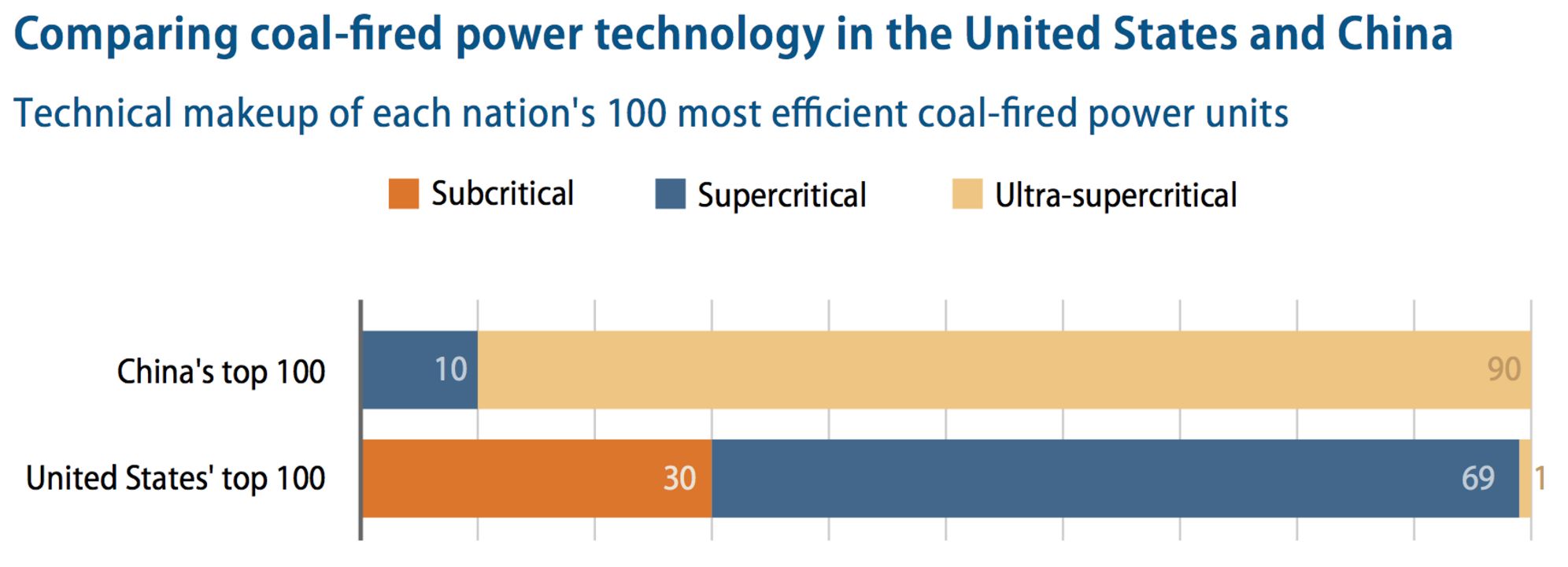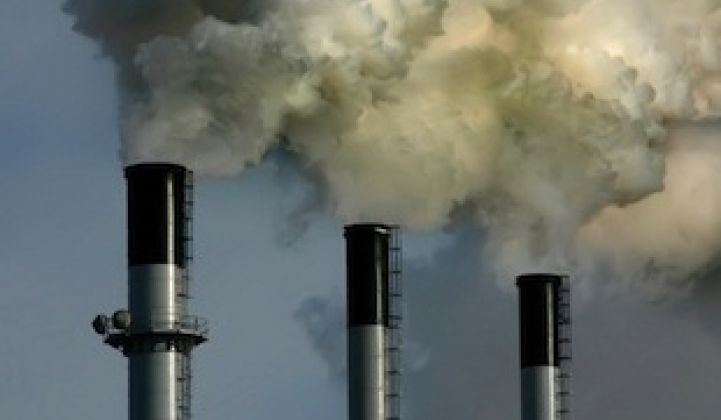China is taking on a colossal energy transformation. But it’s not just happening in the renewable energy sector. It's also happening in coal.
Along with developing sprawling new wind and solar farms, China is investing heavily in the most efficient coal technologies. In fact, new plants under construction in the country are dramatically more efficient than anything currently operating in the U.S., according to a new report from the Center for American Progress.
China is closing down many of its older coal plants. At the same time, China’s operating coal plants must meet a very high efficiency standard by 2020 -- a bar that very few American coal plants can meet.

Source: Center for American Progress
While renewables are expanding quickly in China, cleaner coal will play an important role in meeting emissions targets, say the CAP analysts.
"We found that the nation’s coal sector is undergoing a massive transformation that extends from the mines to the power plants, from Ordos to Shanghai. China is indeed going green. The nation is on track to overdeliver on the emissions reduction commitments it put forward under the Paris climate agreement, and making coal cleaner is an integral part of the process," they write.
It's unclear how much new coal will actually get built, however. CAP researchers dug into a wave of Chinese coal plants announced between 2013 to 2016 and found that many of them likely won't get constructed.
"What American observers need to know is that many of those new plants are white elephants that China cannot fully utilize. They represent a blip rather than a trend, and Beijing is already moving to shut down many of these new plants."
Still, the plants currently under construction in China are some of the most efficient in the world. The report found that 90 out of 100 of China’s most efficient coal plants are ultra-supercritical, which means they’re operating at high temperatures of over 1,400 degrees Fahrenheit and pressures of more than 5,000 pounds per square inch.
In contrast, only one of America's 100 most efficient coal plants is ultra-supercritical. The rest are subcritical or supercritical, which operate at much lower temperatures and pressures, and thus are far less efficient.
It's important to note the age difference between the different categories of plants, however.
"Among the top 100 most efficient plants in the United States, the initial operating years range from 1967 to 2012. In China, the oldest plant on the top 100 list was commissioned in 2006, and the youngest was commissioned in 2015," wrote
China and America are transitioning their coal sectors for different reasons.
Chinese citizens are pressuring the government to solve severe air pollution problems, forcing Chinese officials to halt many new plants. Cheap natural gas is a primary reason for coal retirements in the U.S.
China doesn’t have the same type of easily accessible, low-cost domestic natural gas that America does. This makes efficient coal more important to its energy mix in the medium term, conclude the analysts.
"Energy solutions that work well for China will not necessarily work well for the United States. In addition to the massive population disparity, the United States has access to cheap and plentiful shale gas, and China does not. If China is going to reduce emissions substantially, more efficient coal generation has to be part of its equation, at least for the near to medium term. In the United States, investing in next-generation clean coal plants is not a good solution, because natural gas is cheap, plentiful and lower-emitting than all but the most expensive coal-fired power," write the researchers.
The transformation won’t be easy for coal workers. But employment in clean energy will far outpace the decline in coal jobs in China.
According to the report, Beijing expects its coal sector to shed 1.3 million workers between 2016 to 2020. Meanwhile, 13 million new clean energy jobs are slated to be created in China by 2020.



